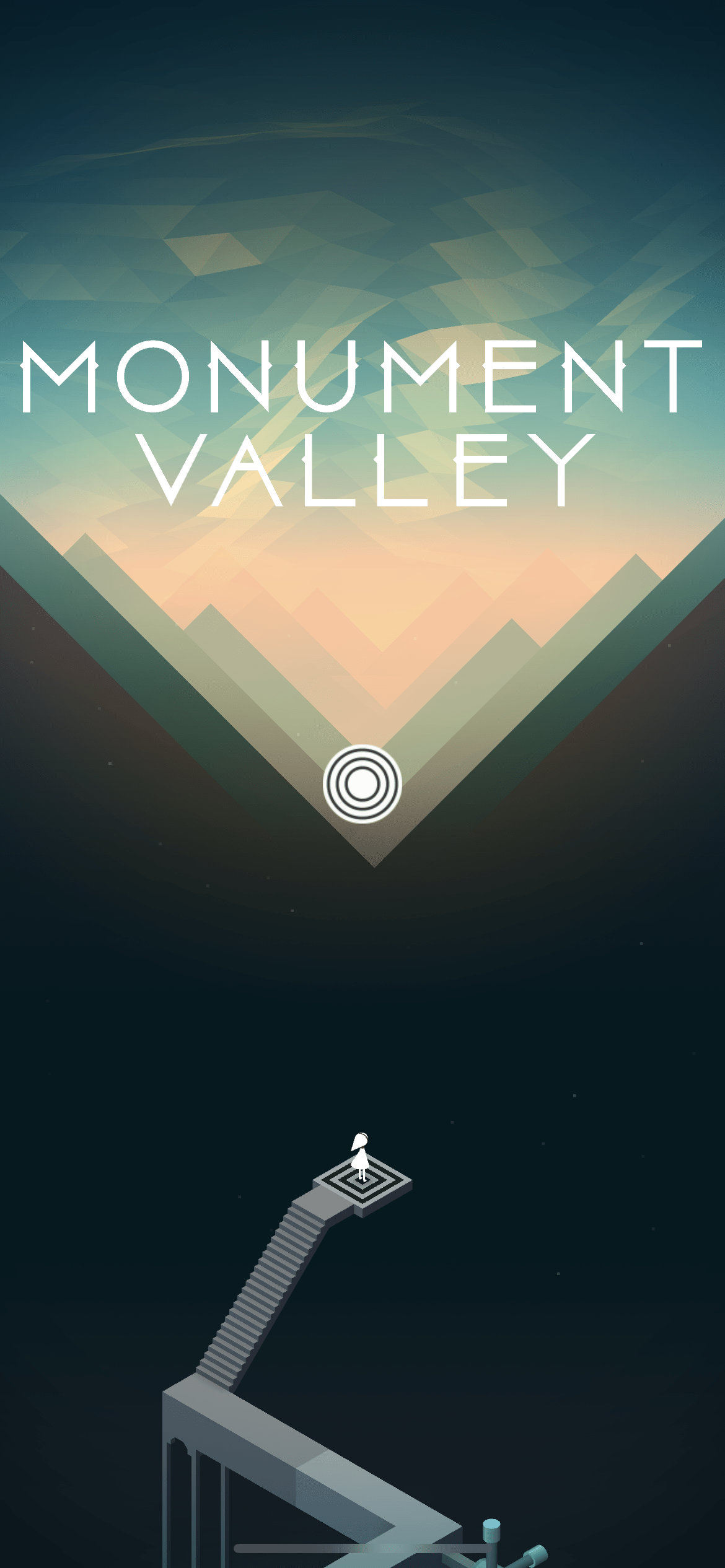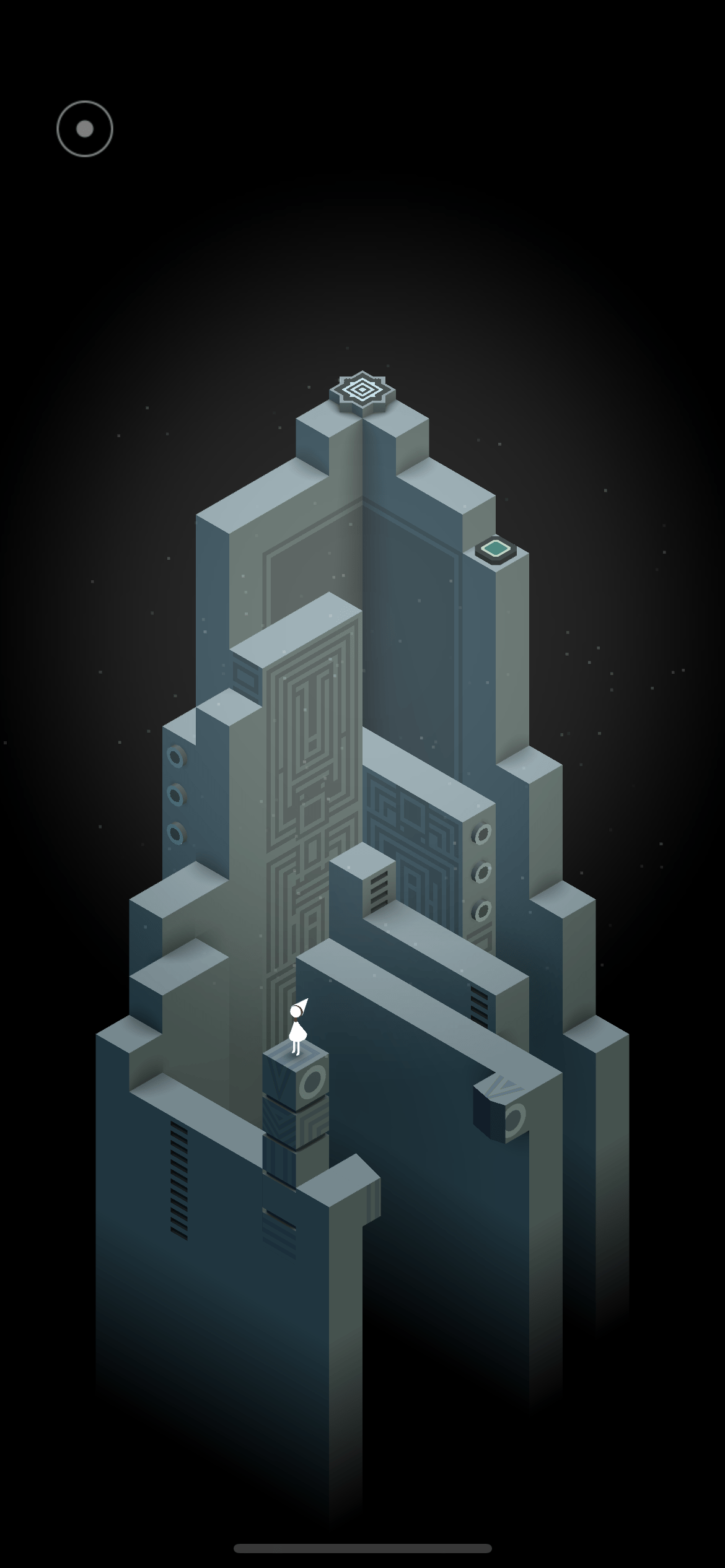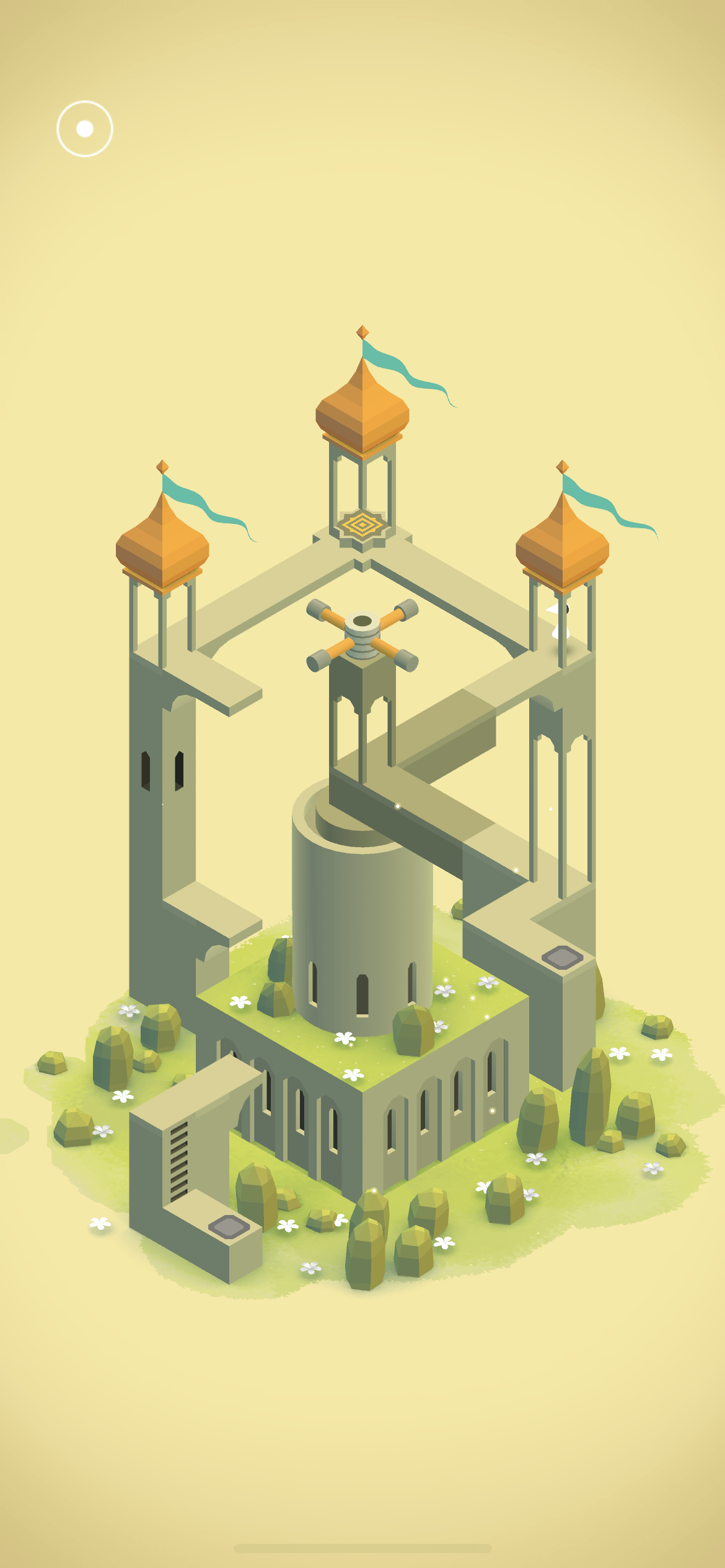Monument Valley is an optical illusion and meditative puzzle game where Princess Ida manipulates impossible objects and architectural platforms to complete each level. Each level is a puzzle presented in an isometric view. This is my favorite game that I’ve discovered through CS247G due to the sleek visual design and the mechanics of the puzzles that push forward the narrative of the game.

 Monument Valley is an enacting narrative story gated by puzzles. The puzzles support the overall narrative by providing clues because players learn about each level’s central interaction loop through indirect cues with the environment. Design elements like color, crow people, and circular buttons help the user discover the main interaction loop necessary to complete the level. For example, on level 2, three circles on the side of the structure indicate that the platforms can be moved vertically.
Monument Valley is an enacting narrative story gated by puzzles. The puzzles support the overall narrative by providing clues because players learn about each level’s central interaction loop through indirect cues with the environment. Design elements like color, crow people, and circular buttons help the user discover the main interaction loop necessary to complete the level. For example, on level 2, three circles on the side of the structure indicate that the platforms can be moved vertically.



Monument Valley is able to achieve narrative, sense pleasure, and discovery fun due to the mechanics of the puzzles. First, each puzzle is presented in a “chapter” which indicates a narrative story. During certain puzzles, spirits talk to Princess Ida to provide cryptic background information. Because each puzzle only reveals subtle hints, the game keeps players hungry for more narrative. Any interaction with the puzzles in Monument Valley creates sensory feedback that is extremely delightful. I played the game with my Airpods on and heard serene melodies and sounds of grandiose doors moving as I moved each piece of architecture. Because the core interaction loops to solve each puzzle build over different levels, the game creates fun in discovery. In level 2, the game introduces a button that Ida can stand on to trigger a new mechanism. In level 3, the game introduces a sliding wall. These solution mechanisms are presented subtly without any text which increases discovery as well.
Perhaps the most interesting part of Monument Valley is that the puzzles are the game, and that like puzzles, the game must end. Each puzzle in Monument Valley has a clear answer with no destroyable states, and there are only 10 levels. Due to this, the game does not have a sense of real failure. There is no way to die, no leaderboard, no ways to collect points, and no hints that players can access when they are stuck. I worry that this lack of feedback and consequential stakes increase the likelihood that the user drops in the middle of the game. Especially during long chapter transitions that grow tedious, players could drop-off midway. To address this challenge, I would further emphasize the narrative richness and sense pleasure of the game to keep players. Each level should have an interaction with a spirit that reveals narrative information. There should also be a way to track Princess Ida’s progress overall as you complete each puzzle so players know how far they’ve come and what’s left. Players should be advised to only play the game with headphones on. Players can stay engaged if they treat the game akin to a film experience.


